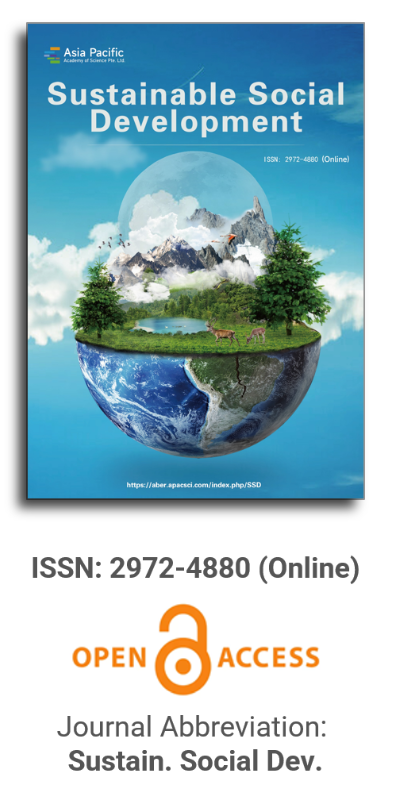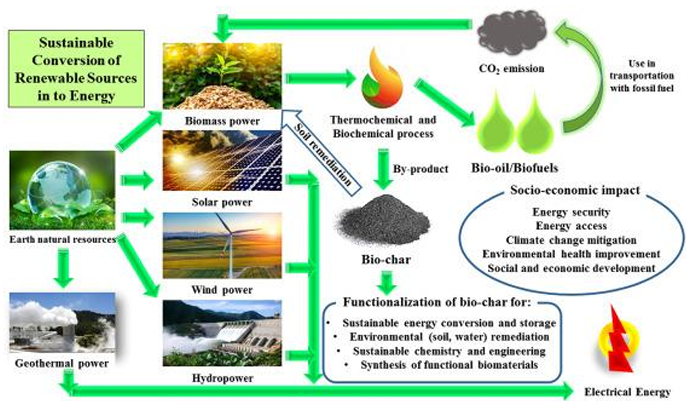
Asia Pacific Academy of Science Pte. Ltd. (APACSCI) specializes in international journal publishing. APACSCI adopts the open access publishing model and provides an important communication bridge for academic groups whose interest fields include engineering, technology, medicine, computer, mathematics, agriculture and forestry, and environment.

Modelling-based analytics for urban grand challenges
Vol 2, Issue 4, 2024
Download PDF
Abstract
Society faces grand challenges on a number of dimensions, for example: climate change, pandemics, security and geopolitics, and social exclusion. The future development of towns and cities is key to meeting these. The availability of analytic capabilities provides foundations for developing and evaluating alternative policies and plans. An extensive range of models is available, but they have not been well-focused on these kinds of grand challenges. A significant research task, therefore, is to review the modelling developments needed to provide the necessary analytics base. We consider in turn: the building bricks; the challenge of interdependencies and high dimensionality, using Lowry’s model as a framework; the integration of the elements into a comprehensive model as a basis for grand challenge analytics; and the challenges of implementation.
Keywords
References
- Wilson AG. Entropy in urban and regional modelling. London: Pion; 1970.
- Wilson A. Boltzmann, Lotka and Volterra and spatial structural evolution: an integrated methodology for some dynamical systems. Journal of The Royal Society Interface. 2008; 5(25): 865-871. doi: 10.1098/rsif.2007.1288
- Lowry IS. ‘A model of metropolis’, Memorandum RM-4035-RC, (Santa Monica: Rand Corporation). Available online: https://www.rand.org/content/dam/rand/pubs/research_memoranda/2006/RM4035.pdf (accessed on 11 March 2024).
- Echenique MH, Flowerdew ADJ, Hunt JD, et al. The MEPLAN models of Bilbao, Leeds and Dortmund. Transport Reviews. 1990; 10(4): 309-322. doi: 10.1080/01441649008716764
- Simmonds DC. The design of the DELTA land-use modelling package. Environment and Planning, B. 2011; 26: 665-684.
- Kim TJ, Boyce DE, Hewings GJD. Combined Input‐Output and Commodity Flow Models for Interregional Development Planning: Insights from a Korean Application. Geographical Analysis. 1983; 15(4): 330-342. doi: 10.1111/j.1538-4632.1983.tb00791.
- Harris B, Wilson AG. Equilibrium Values and Dynamics of Attractiveness Terms in Production-Constrained Spatial-Interaction Models. Environment and Planning A: Economy and Space. 1978; 10(4): 371-388.
- de Martinis V, Pagliara F, Wilson A. The Evolution and Planning of Hierarchical Transport Networks. Environment and Planning B: Planning and Design. 2014; 41(2): 192-210. doi: 10.1068/b39102
- Dearden J, Wilson A. Explorations in Urban and Regional Dynamics. Abingdon: Routledge; 2015.
- Ellam L, Girolami M, Pavliotis GA, et al. Stochastic modelling of urban structure. Proceedings of the Royal Society A: Mathematical, Physical and Engineering Sciences. 2018; 474(2213): 20170700. doi: 10.1098/rspa.2017.0700
- Gaskin T, Pavliotis G, Girolami M. Neural parameter calibration for large-scale multi-agent models. arXiv. 2002; arXiv:2209.13565v1.
- Batty M, Milton R. A new framework for very large-scale urban modelling. Urban Studies. 2021; 58(15): 3071-3094. doi: 10.1177/0042098020982252
- Birkin M, Clarke G and Clarke M. Retail geography and intelligent network planning, Chichester, Wiley, 2002
- Boyce DE, Williams HCWL. Forecasting urban travel, Cheltenham and Northampton. Ma.: Edward Elgar; 2015.
- Huber F, Spiekermann K, Wegener M. Cities and climate change: a simulation model of the Ruhr area 2050. Available online: http://www.corp.at (accessed on 11 March 2024).
- Spooner F, Abrams JF, Morrissey K, et al. A dynamic microsimulation model for epidemics. Social Science & Medicine. 2021; 291: 114461. doi: 10.1016/j.socscimed.2021.114461
- Guo W, Gleditsch K, Wilson A. Retool AI to forecast and limit wars. Nature. 2018; 562(7727): 331-333. doi: 10.1038/d41586-018-07026-
- Dorling D. Peak inequality: Britain’s ticking time bomb. Policy Press, Bristol; 2018.
- Dorling D. Inequality and the 1%. In: Verso Books. London and New York; 2019.
- Wilson AG. A generalised representation for a comprehensive urban and regional model. Computers, Environment and Urban Systems. 2007; 31(2): 148-161. doi: 10.1016/j.compenvurbsys.2006.05.001
- Dennett A, Wilson A. A Multilevel Spatial Interaction Modelling Framework for Estimating Interregional Migration in Europe. Environment and Planning A: Economy and Space. 2013; 45(6): 1491-1507. doi: 10.1068/a45398
- Caschili S, Wilson AG. Test of bi-proportional fitting procedure applied to international trade. In: Wilson A (editor). Geo-mathematical modelling. Wiley, Chichester; 2016. pp. 26-32.
- Birkin M, Clarke M. Synthesis—A Synthetic Spatial Information System for Urban and Regional Analysis: Methods and Examples. Environment and Planning A: Economy and Space. 1988; 20(12): 1645-1671. doi: 10.1068/a201645
- Smith A, Lovelace R, Birkin M. Population synthesis with Quasi random integer sampling. Journal of Artificial Societies and Social simulation. 2017; 45: 1.
- Rees PH, Wilson AG. Spatial population analysis. London: Edward Arnold. New York: Academic Press; 1977.
- Zhang B, Rees G, Solomon G, Wilson A. Input-output analytics for urban systems: explorations in policy and planning. In: Proceedings of the 31st Annual Geographical Information Science Research UK Conference (GISRUK2023); 19-21 April 2023; Glasgow, Scotland.
- Pagliara F, Preston J, Simmonds D, et al. Residential location choice: models and applications. Springer, Heidelburg; 2010.
- Pagliara F, de Bok M, Simmonds D, et al. Employment location in cities and regions: models and applications. Heidelberg: Springer; 2012.
- Baudains P, Fry HM, Davies TP, et al. A dynamic spatial model of conflict escalation. European Journal of Applied Mathematics. 2015; 27(3): 530-553. doi: 10.1017/s0956792515000558
- Davies T, Fry H, Wilson AG, Bishop SR. A mathematical model of the London riots and their policing. Nature Scientific Reports. 2013; 3. doi: 10.1038/srep01303
- Medda FR, Caravelli F, Caschili S, et al. Collaborative approach to trade: enhancing connectivity in sea- and land-locked countries. Springer, Heidelberg; 2017.
- Marchione E, Johnson SD, Wilson A. Agent-based models of piracy. In: Wilson A (editor). Geo-mathematical modelling. Wiley, Chichester; 2006. pp. 217-236.
Supporting Agencies
Copyright (c) 2024 Alan Wilson
License URL: https://creativecommons.org/licenses/by/4.0/

This site is licensed under a Creative Commons Attribution 4.0 International License (CC BY 4.0).

Prof. Kittisak Jermsittiparsert
University of City Island, Cyprus






It is with deep regret that we announce the cancellation of the Forum on Sustainable Social Development & Computing and Artificial Intelligence, originally scheduled for June 15, 2025.

